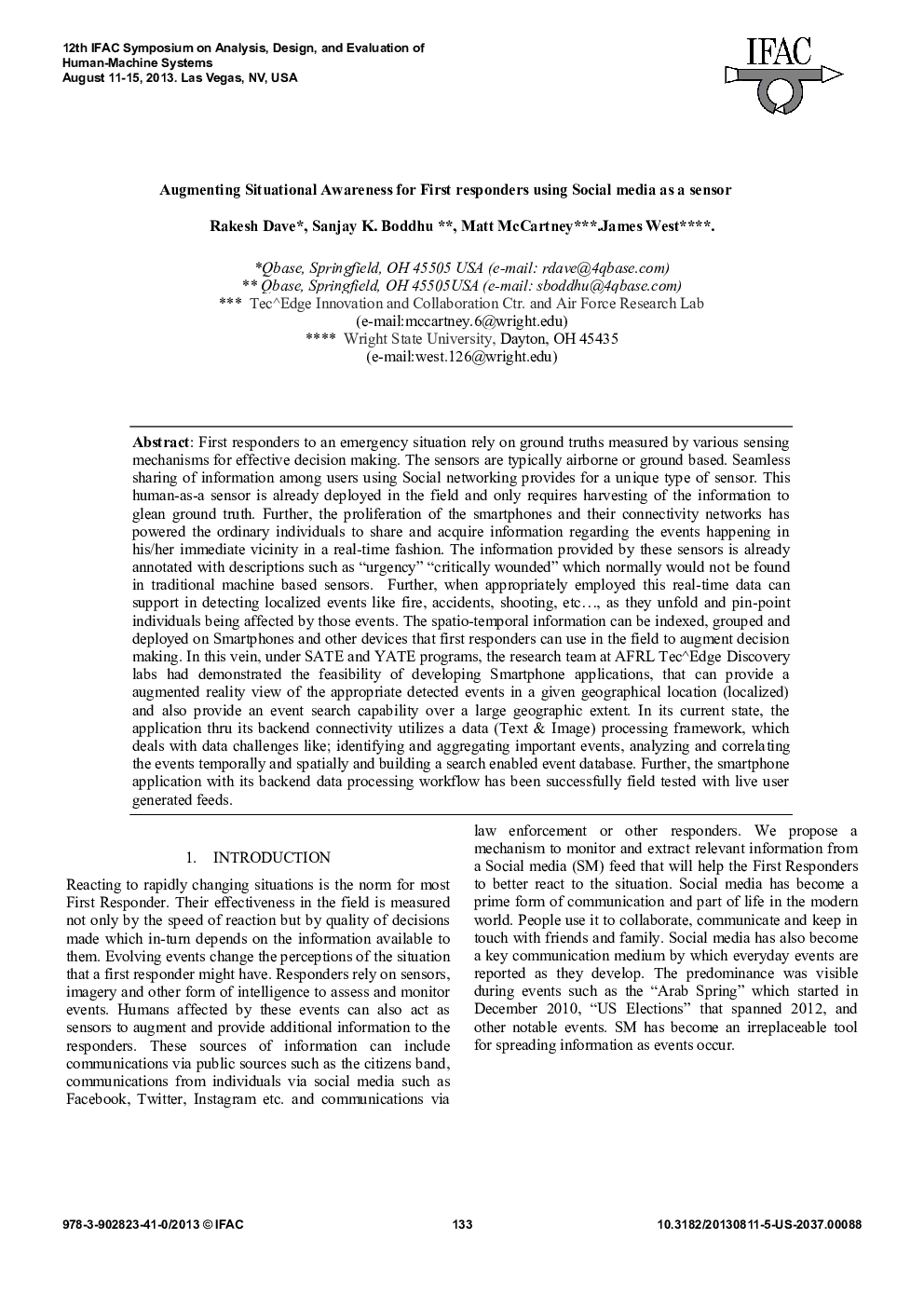| کد مقاله | کد نشریه | سال انتشار | مقاله انگلیسی | نسخه تمام متن |
|---|---|---|---|---|
| 716240 | 892218 | 2013 | 8 صفحه PDF | دانلود رایگان |

First responders to an emergency situation rely on ground truths measured by various sensing mechanisms for effective decision making. The sensors are typically airborne or ground based. Seamless sharing of information among users using Social networking provides for a unique type of sensor. This human-as-a sensor is already deployed in the field and only requires harvesting of the information to glean ground truth. Further, the proliferation of the smartphones and their connectivity networks has powered the ordinary individuals to share and acquire information regarding the events happening in his/her immediate vicinity in a real-time fashion. The information provided by these sensors is already annotated with descriptions such as “urgency” “critically wounded” which normally would not be found in traditional machine based sensors. Further, when appropriately employed this real-time data can support in detecting localized events like fire, accidents, shooting, etc…, as they unfold and pin-point individuals being affected by those events. The spatio-temporal information can be indexed, grouped and deployed on Smartphones and other devices that first responders can use in the field to augment decision making. In this vein, under SATE and YATE programs, the research team at AFRL TecˆEdge Discovery labs had demonstrated the feasibility of developing Smartphone applications, that can provide a augmented reality view of the appropriate detected events in a given geographical location (localized) and also provide an event search capability over a large geographic extent. In its current state, the application thru its backend connectivity utilizes a data (Text & Image) processing framework, which deals with data challenges like; identifying and aggregating important events, analyzing and correlating the events temporally and spatially and building a search enabled event database. Further, the smartphone application with its backend data processing workflow has been successfully field tested with live user generated feeds.
Journal: IFAC Proceedings Volumes - Volume 46, Issue 15, 2013, Pages 133-140